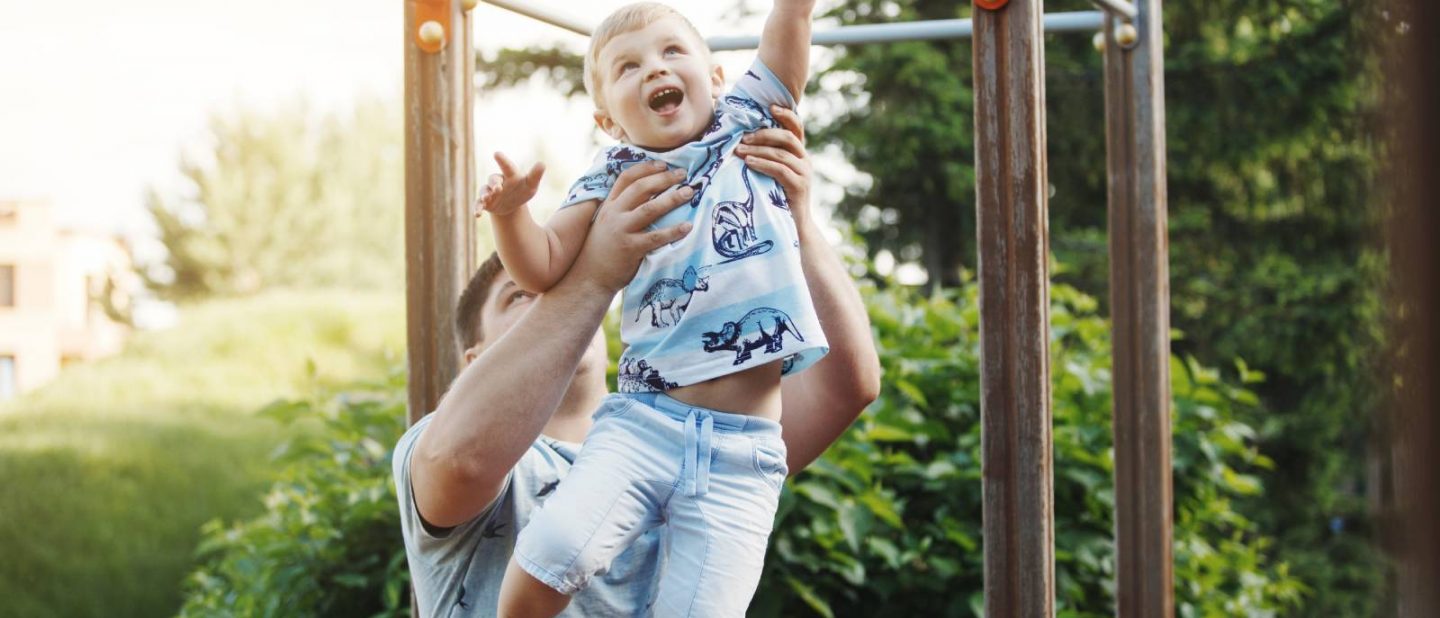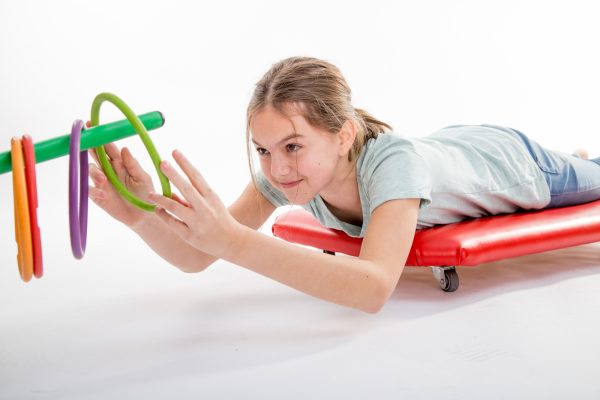
Heaps of ideas for fun & therapy at the beach and park
The beach and park offer a number of different opportunities for a work-out while getting valuable fresh air and a natural source of vitamin D. Plus, it’s all free (and boy, isn’t that a bonus!).
THE PARK
The wide variety of play equipment in parks gives kids wonderful opportunities to move their bodies and develop strength in different areas.
Monkey Bars

Monkey bars provide strengthening of the hands and finger muscles that are used for grasping and handwriting, those important fine motor skills. Of course, with all abilities, you can adapt this movement in a variety of ways, so for example, if your child is unable to fully support themselves, you may be able to hold them to provide added security. The monkey bars are also great for working on eye-hand coordination, core strength, balance, and developing arm and leg strength.
Ladders and beams
Ladders and beams provide opportunities for improving balance and coordination. Think of the ladders leading up to slides or balancing on different equipment lower to the ground. You can even draw a chalk version on the ground to incorporate the same movement. Climbing and heavy work activities stimulate the proprioceptive systems for your child whilst working on all important coordination skills.
Slides

Slides are a great tool for visual perceptual skills (the brain’s ability to make sense of what the eyes see). Practice climbing up those stairs, while holding on to the handrails – it’s fantastic for those kids who are still mastering their stair climbing skills.
Swings
Swings will meet your child’s needs for vestibular stimulation – which is the sense of movement that supports body awareness, coordination, balance and visual skills. By playing on a swing, the vestibular sense will give information about where their body is in space, and if your child is moving, how quickly they’re moving and in what direction.
Climbing frames
Climbing frames have children in constant motion! Not only do they work on gross motor skills, balancing, hand eye coordination, but also planning on where to move next! The heavy work that climbing provides stimulates the proprioceptive systems (knowing where your body is in space).
Stepping stones
We are very fortunate in Australia that we have some of the most diverse and beautiful parks for our children. Some have incorporated beautifully crafted stepping-stones which are ideal for balancing. If balancing is not appropriate for your child’s needs – you can play a game of toss. Just use some beanbags or a sock full of rice, and aim it at the stepping stone. A great alternative and one that works on hand/eye coordination!
Communication – playing shops
A fun favourite, ‘playing shops’ is a good way to work on communication skills. Someone is the shopkeeper, making coffees and the other is the customer. Take turns in ordering and being the person behind the ‘counter’. Practice those important skills of simple greetings, listening and turn taking.
It’s also beneficial to remember that children, just like us, prefer different amounts of sensory input. While at the playground, some will prefer lots of swinging, while others may not. The playground helps children learn about what sensations make them feel good inside and it’s a great learning experience tied to a simple ‘play at the park’.
THE BEACH
Ahh the beach! What a quintessential part of so many Aussie summers. Of course, not all of us live on the coast and many people do travel from country regional areas to the beach – how much that can happen this year, who knows! Next time you are at the beach, whether local or on a holiday break, remember these easy ways you can incorporate some ‘therapy’ without your kids even knowing!
Jumping waves


The jumping of waves is a great all- rounder. It not only strengthens the heart (for cardiovascular health), it increases oxygen capacity and stimulates the metabolism! Then there’s the gross motor action of jumping, timing and balance! So, whether big or small, get jumping those waves and enjoy the many benefits!
Playing ‘catch’ with the waves
Playing catch with the waves – you run towards the waves breaking, you then have to run back away from the wave so it doesn’t ‘catch’ you! This is a fun one, as each wave is different – it works on planning and processing when to run away from the wave, as opposed to running toward it. Works on all those great big leg muscles too – quads, glutes and calves!
Swimming
Swimming is so beneficial as a good all-rounder. It works every muscle group in the body. If your child is not a strong swimmer, there are plenty of floatation suits that will help keep them safe while they work on their swimming skills using arms and legs.
Digging holes and making sandcastles
Sand is perfect for some sensory work, but for some sensory sensitive children you may have to do some desensitising and take things slowly. Even us adults hate feeling sandy sometimes!
Digging holes and making sandcastles are just a couple of ways to move the body and to also get those creative juices flowing! Is your sandcastle going to have a moat? Will it have water in the moat, will the castle be big or small and will you decorate it with pretty seashells? Will your brother or sister stomp on it at the end, to work their leg muscles?!
Playing beach cricket or beach soccer
Take down your cricket set, AFL, NRL or soccer ball and have a fun game with your family. The fun of playing on the sand gives a different sensory experience and a good work out for the legs. Plus, with the added bonus of hitting the ball with your body or with a bat, works on those gross motor skills in a beautifully fresh environment!
More sensory opportunities
The tactile environment of the beach gives additional opportunities for a bit of sensory exploration with all the natural ‘touch’ objects – the sand, the water, sticks, shells and coral. Have fun!








